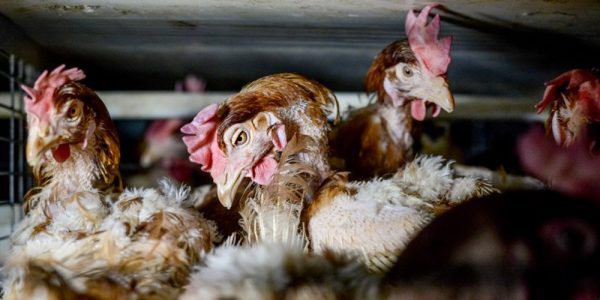Video Transcript
We’re experiencing a world-wide crisis. The World Health Organisation (WHO) calls it “one of the biggest threats to global health” that we face.[1] It’s something that scientists estimate could be killing 10 million people a year by 2050[2] — that’s more lethal than cancer is today. This crisis is antibiotic resistance — and it might surprise you who’s responsible for it.
Antibiotics are crucial to modern medicine. Just listen to this guy: “antibiotics seem likely to become our most important weapons against many diseases.” But with every passing year, these medical weapons are becoming less effective at fighting infectious bacteria. Why?
Why? Bacteria are evolving. We have flooded the world with antibiotics, and bacteria are quickly becoming immune to everything we throw at them. It’s already getting more difficult to treat infections like E. Coli, Pneumonia, and Tuberculosis. So we have to ask:
So how have we managed to so massively overuse antibiotics? Doctors are prescribing more antibiotics than ever before;[3] and in many countries they are easily available over-the-counter. But humans using antibiotics is not the biggest problem. The main culprit? Animal agriculture.
With thousands of animals crammed together in filthy conditions, factory farms are the perfect breeding grounds for bacteria. Chickens, pigs and fish suffer in some of the most unhygienic conditions that farms inflict on animals. Antibiotics are used to treat sick animals, but the spread of disease is so common that many farms now put antibiotics in the animals’ food or water supply. This means that entire sheds of animals are being dosed with antibiotics — whether they are sick or not. This is known in the industry as “prophylactic dosing”. It’s legal, routine, and it’s happening more and more.
Over half of the world’s antibiotics are given to animals in food production systems.[4] In some countries, it’s as high as 80%.[5] One public health research organisation has calculated that globally, animals are consuming over 130,000 tons of antibiotics every year.[6] That’s more than triple the amount we use to treat humans.[7] According to the researchers, “This scale up in antibiotics, primarily as a substitute for good nutrition and hygiene in livestock production, is simply unsustainable.”[8]
There is another effect of giving farm animals antibiotics: it makes them grow faster. Scientists aren’t certain why this happens, but one theory is that antibiotics kill gut bacteria, making animals absorb nutrients faster.[9] This further speeds up the growth of animals that have already been genetically designed to grow “meat” at multiple times their natural rate, and compounds the painful physical and neurological problems that come with accelerated growth — not that the meat industry would tell you this.
The Australian chicken and pig meat industries claim that they don’t use antibiotics for the main purpose of growth promotion, but there are no laws or regulations stopping them — and growth promotion will always be a side-effect of antibiotic dosing, intentional or not. Either way, the meat industry is using antibiotics to maintain an intensive, unhygienic production system in which profit will always come before the wellbeing of the animals.
But okay, we’ve established that antibiotic use in factory farms can have terrible animal welfare implications. But what has this got to do with the global health crisis that we mentioned at the top of the video? In a word: superbugs.
Whether the meat industry is using antibiotics prophylactically or doing it to make animals grow faster, the result is the same. The constant dosing kills off weaker bacteria, leaving behind those who have developed a resistance to the antibiotic. That’s how you get drug-resistant bacteria, or: superbugs. And these superbugs can even pass their newly-developed resistance on to other bacteria, creating even more antibiotic-resistant bugs. And these bacteria aren’t just infecting animals. According to The World Health Organisation: “These bacteria can be transmitted from animals to humans via direct contact between animals and humans, or through the food chain and the environment.”[10] This makes superbugs a real threat to human health.
Right now, 700,000 people worldwide are dying every year from drug-resistant bacteria.[11] One example is multidrug-resistant Campylobacter, which infects over 300,000 people a year. Similar to E. coli and Salmonella, it causes diarrhoea, fever and abdominal cramps. It can spread from animals to people through food contamination, especially in undercooked chicken[12] — often the result of faeces contaminating the meat during butchering.[13]
Meanwhile, bacteria continue to evolve, and we are running out of antibiotics that can fight them. We need the effective antibiotics that we have left to treat sickness in humans. The animal agriculture industry claims to only use antibiotics that are not ‘critical’ to human health, but the World Health Organisation says we need to stop using any antibiotics prophylactically, or for growth promotion.[14] Otherwise? We could enter “a post-antibiotic era — in which common infections and minor injuries can kill.”
So, how can we avoid an antibiotic apocalypse? First off, we need to urgently pressure our governments to regulate the use of antibiotics on farms. That means banning the use of antibiotics for growth promotion and prophylactic dosing, and putting a cap on the total amount of antibiotics that farms can use.
But what about the animals at the centre of this issue? Any realistic solution to this crisis needs to include a massive reduction in meat consumption. Less demand for meat means less animals in intensive, unhygienic farming systems, and that means using far fewer antibiotics. It also means fewer animals living lives of confinement and suffering. Individuals choosing to eat more plant-based meals can make a real difference, especially in countries with meat-heavy diets like Australia.
Working together to combine these personal and political strategies, we can make sure antibiotics are still around to treat future generations, improving the lives of millions of animals — human and non-human alike.







